Balanced Logistics
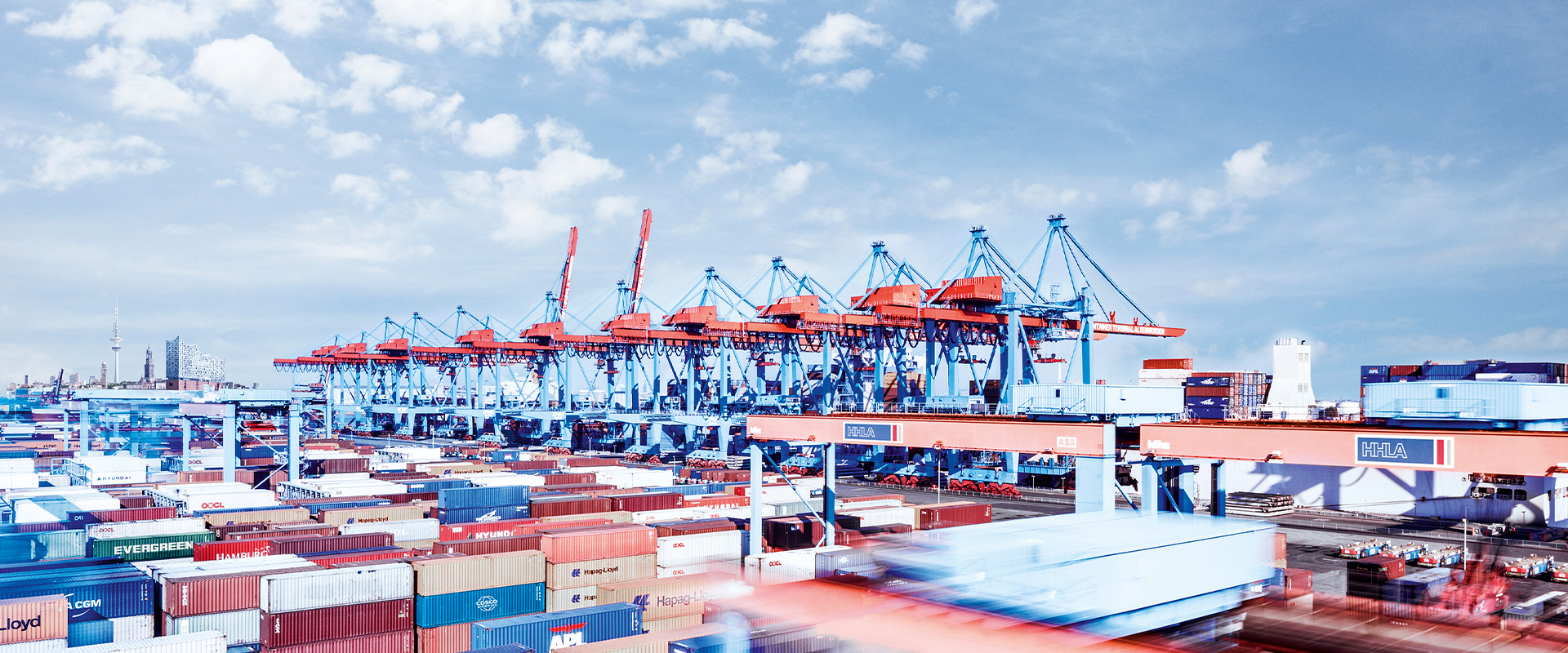
Balanced Logistics – for sustainable solutions
As a company with a long tradition and a wealth of experience, HHLA is highly engaged with addressing social developments. Sustainability has therefore been anchored deep in our company DNA for a long time. HHLA is committed to being both economically successful as well as socially and ecologically responsible. This ambition has been implemented with “Balanced Logistics”, even in the midst of the challenging conditions of 2020.
In implementing its “Balanced Logistics” sustainability strategy, HHLA is strengthening its commitment to bringing together environmental, social and economic responsibility. Each is a prerequisite for the others: Economic success creates the means and opportunities to be able to invest in the needs of our employees and in climate-friendly technologies, as well as to fulfil our commitment to a policy of social and environmental responsibility.
HHLA sees innovation and process efficiency as crucial factors in developing sustainable solutions, being environmentally responsible and operating successfully in line with its self-image as the “gateway to the future”. In order to implement its goals in a systematic way, HHLA has categorised its initiatives into nine different fields of activity and established the relevant guidelines and targets.
Open dialogue is essential for reconciling different stakeholder interests and developing a mutual understanding. Sustainable growth in logistics requires inspiration and constructive contributions from many different sides.
HHLA implemented its sustainability strategy consistently, including under the specific challenges posed by the coronavirus pandemic, and it is aiming to become climate-neutral by 2040.
For example, the infrastructure for automated, battery-powered guided vehicles (AGVs) at the CTA has been further expanded. A total of six new green electricity charging points now supply the AGV fleet. The proportion of AGVs powered by lithium-ion batteries was also increased from 50 percent to 65 percent this year. By the end of 2022, all 100 vehicles in the fleet should have been switched over to climate-friendly drive systems.
Our sustainability projects 2020
Through technological developments, process optimisation and knowledge transfer, HHLA has been able to reconcile its entrepreneurial success with its responsibility towards the climate and society for many years now. The following reports on projects and initiatives with which we work to achieve our sustainability goals and thus also contribute to the sustainability goals of the United Nations.
Choose one of the three dimensions of sustainability to filter project reports by topic and to see which sustainability goals of the United Nations they contribute to.
Environmentally friendly logistics chains
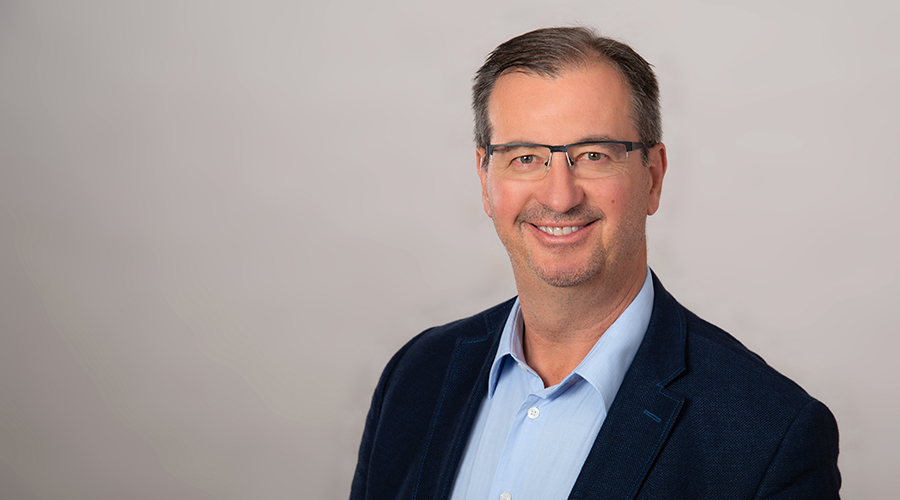
“We want to use HHLA Pure as leverage to make a positive impact on the climate.”
Interview with Robert Groiss, Business Development Manager at METRANS
Mr Groiss, you are the Business Development Manager at HHLA subsidiary METRANS, the market leader for container transport in seaport-hinterland traffic in Central, Eastern and Southern Europe. What have been the most important developments that you have seen at HHLA’s rail subsidiary in the past few years?
As Business Development Manager, I am responsible for the continued development of the METRANS business model. In addition to many other exciting projects, I have been particularly involved in the development and introduction of HHLA Pure, which facilitates climate-neutral container transport.
What aim is HHLA subsidiary METRANS pursuing with HHLA Pure?
METRANS’ core mission is the transport of containers from seaport to hinterland and vice versa. METRANS thereby shifts container transport from road to rail, making a significant contribution to climate protection in the process.
We want to use HHLA Pure as leverage to make a positive impact on the climate and reduce transport-related CO2 emissions. HHLA Pure is reviewed annually by TÜV Nord, which certifies the climate neutrality of our container transport.
How does HHLA Pure work exactly, and what makes it so climate-friendly?
METRANS already uses energy-efficient electric trains and CO2-optimised lightweight flat wagons, which can transport more containers on trains of the same length. This reduces energy consumption. Noise emissions have also been minimised thanks to low-noise disc brakes.
All unavoidable CO2 emissions are offset through HHLA Pure with so-called emissions reduction certificates. In its offsetting activities, HHLA supports climate-friendly projects that are certified according to the Gold Standard, the highest standard of Voluntary Emission Reduction: these include wind farms in India, low-friction anti-fouling paint for ship hulls and reforestation of rainforests in Panama.
To what extent are the wagons CO2-optimised? Can you give us some figures?
METRANS lightweight flat wagons are about 30 % lighter than the average rolling stock in Europe. This allows us to load more containers and significantly reduce CO2 emissions. If, for example, a fully loaded train is travelling from the HHLA Container Terminal Altenwerder in the Port of Hamburg to Warsaw, transport using METRANS lowers its CO2 emissions by about 45 %.
How has the service been received by your customers?
We began with a pilot phase which allowed us to win two important logistics players, forwarding companies cargo-partner and the Weets Group. Other logistics service providers have since discovered HHLA Pure for themselves and integrated it into their sustainability strategies as part of their efforts to create environmentally friendly transport chains.
We provide HHLA Pure customers with certification that verifies the climate neutrality of our transport and the offset CO2 emissions. This enables our customers to attest to their commitment to climate protection.
Is climate-neutral container transport available throughout the entire METRANS rail network?
No, but across most of the METRANS network. HHLA Pure is currently available on all connections to and from Hamburg, Bremerhaven and Koper, and we will integrate more links in the near term. We also intend to offer HGV pre- and on-carriage through HHLA Pure in the very near future. This will enable our customers to offer carbon-neutral transport even over the last mile.
Area optimisation
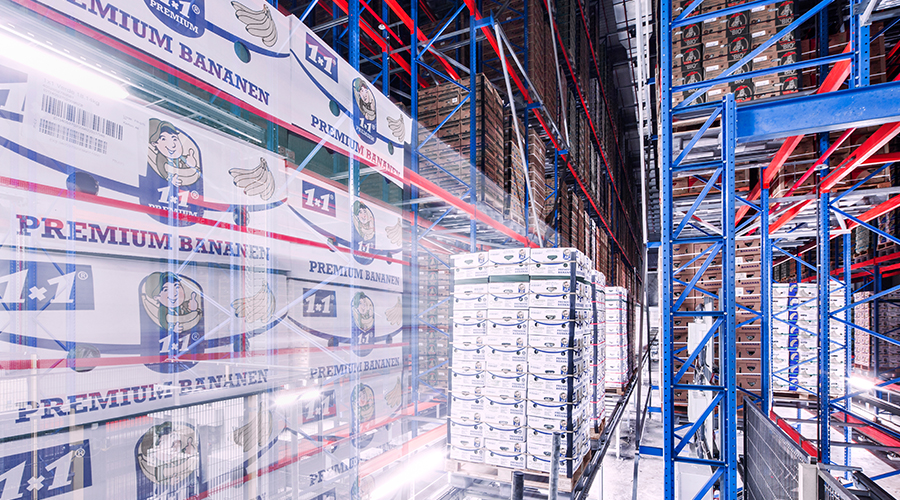
Automated high-bay warehouse boosts space efficiency in banana handling
The O’Swaldkai multi-purpose terminal in Hamburg, located in the Kleiner Grasbrook district to the south of the northern branch of the Elbe, is Germany’s biggest fruit-handling facility. Every year, HHLA Frucht- und Kühl-Zentrum (HHLA Frucht) handles approximately 500,000 tonnes of bananas and 80,000 tonnes of apples, pineapples, grapes, citrus fruit and potatoes.
This enables Hamburg to live up to its reputation as a key port for the import of fruit. Because it has its own ripening facility, banana handling is particularly important.
In order to keep the imported exotic fruits fresh, the cold chain may not be broken when discharging the cargo from the container. As a result, O’Swaldkai uses the latest technical ship-handling and ground-handling equipment, which transports the foodstuffs immediately to air-conditioned storage bays. The bananas and other fruit are stored there for the time being.
In addition to one of the most advanced refrigerated warehouses for banana handling in the world, capable of housing 8,000 pallets, HHLA Frucht primarily shows off its innovative credentials in terms of space-efficient storage. A fully automated high-bay warehouse boosts storage capacity by 66 % to 16,300 m2sup>. This means the automated high bay can accommodate more than 3,000 additional pallets of bananas in the same space.
Ensuring space-efficient and thus sustainable planning of terminal processes is one of HHLA’s core concerns. As such, the fully automated high-bay warehouse for banana handling at HHLA Frucht is part of the “Balanced Logistics” sustainability strategy, which states, among other things, that existing space must be used as efficiently as possible.
With this aim, HHLA supports the European Union’s Resource Strategy to put a stop to the increasing use of land and achieve the transition to circular land use. It’s a key aspect for a terminal operator right in the heart of Hamburg. After all, the amount of usable space and area available for development is limited here.
Climate protection and energy efficiency
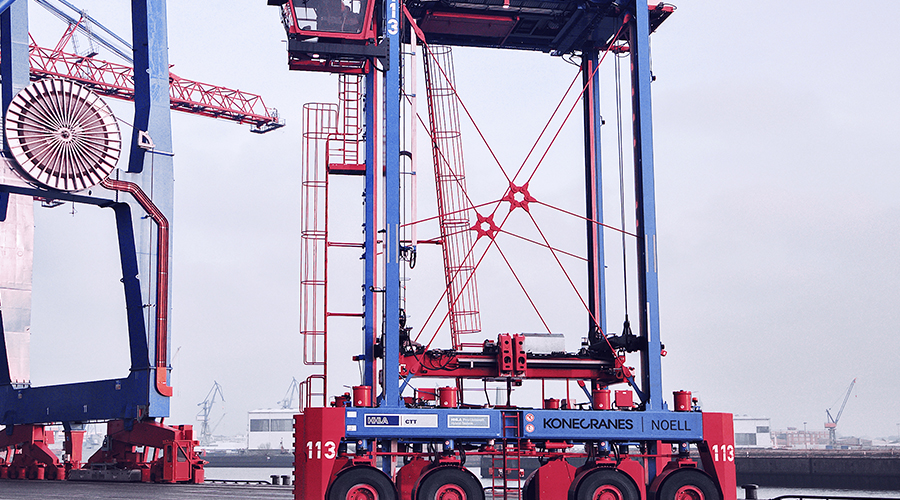
Hybrid straddle carriers move containers efficiently across the terminals
They dominate the skyline of the HHLA Container Terminal Burchardkai (CTB) and HHLA Container Terminal Tollerort (CTT): long-legged container transporters that move the steel boxes between ship, yard and rail terminal. In the Port of Hamburg, these manned systems are known as straddle carriers.
A standard diesel straddle carrier uses approximately 30 litres of diesel for each hour of use. To reduce consumption and the associated CO2 emissions, HHLA has been using diesel-electric straddle carriers for quite some time. This has reduced the vehicles’ diesel consumption by approximately 30 %, or 9 litres per hour of use.
In order to further reduce energy consumption and CO2 emissions, HHLA is testing hybrid straddle carriers. Two of these hybrid straddle carriers have been in use as part of a test at the HHLA Container Terminal Tollerort (CTT) since 2019. Another hybrid straddle carrier has already completed its test run at the HHLA Container Terminal Burchardkai (CTB). The energy-efficient technology of these battery-hybrid straddle carriers reduces diesel consumption by a further 25%.
The principle behind the hybrid technology is very simple: The straddle carrier stores surplus energy, which is generated during braking or while the load is being lowered, for example, in a high-performance lithium-ion battery. As it drives, the hybrid straddle carrier uses this energy from the battery. This significantly reduces diesel consumption.
HHLA and Konecranes, the manufacturer of the hybrid straddle carriers used at CTT, are united by a lasting partnership that has often resulted in pioneering work in launching innovative container handling solutions. The latest generation of hybrid straddle carriers has made clear the enormous potential that their further development offers. In under two decades, energy consumption has been halved.
After the successful test phase, HHLA is continuing to expand the hybrid straddle carrier fleet and has already ordered 18 additional hybrid straddle carriers. The first two have been in use at CTT since December 2020 and two more followed at the start of the new year. The 14 remaining hybrid straddle carriers will be supplied by Konecranes in the coming months.
Environment and resource protection
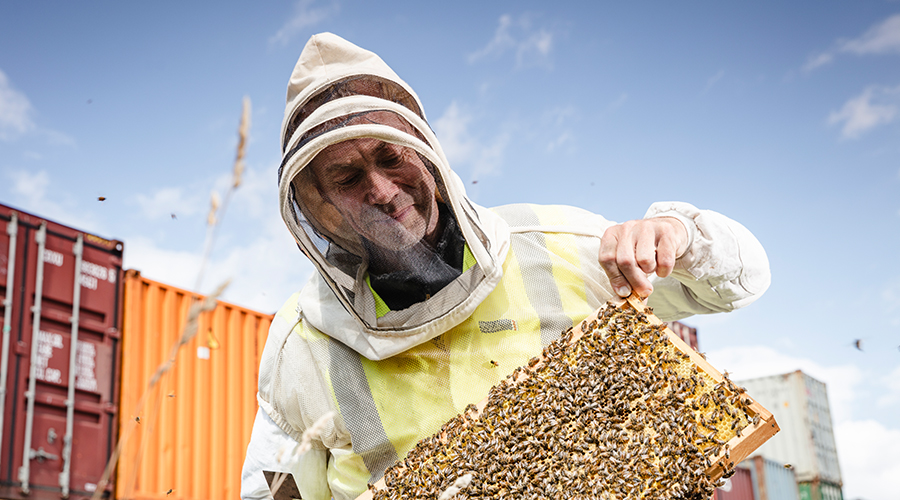
The busy bees of Altenwerder
Interview with Stephan Iblher, a beekeeper at the HHLA Hamburg container terminals
Stephan Iblher is at home in Hamburg with his beekeeping business elbgelb, which has hives in twelve locations throughout the city. Ten colonies live at the Container Terminal Altenwerder (CTA). The professional beekeeper is proud of the honey made at CTA and is delighted with the product, which is Hamburg through and through. In this interview, Stephan Iblher gives us an insight into the unusual lives of his bees at the port.
How long have you been keeping bees, and how did you come to choose this job?
For 14 years now. I’m actually a master carpenter. When my wife and I started a family, I sold my joinery business and focussed on looking after the children. I was always fascinated by beekeeping. My granddad was a beekeeper and I was able to watch what he was doing when I was a child. After I sold the joinery business, I started beekeeping myself – just as a hobby at first. Now it’s my main source of income.
What do you find most interesting about working with bees?
I find insects in general really fascinating. They work in a completely different way to mammals. How they assign jobs, organise themselves. Every bee knows what it has to do. Every bee has its place, and every bee is equal – no matter how slow or hard-working it is. By watching bees, we can understand nature and learn from it. I just find that extremely interesting.
How did it come to pass that your bees moved to the Container Terminal Altenwerder?
I read an article by your sustainability officer Mr Pietsch in the HHLA staff magazine “Wat Loppt?”. HHLA wanted to promote biodiversity within the port by introducing bee colonies – so I got in touch. That’s five years ago now.
Do the bees mind their unusual environment?
No. For the bees, there’s nothing unusual about it – it’s just home. Just like humans, bees are very capable of adapting. If they were bothered by it, they would move out.
How big is the bee colony at CTA? And how many hives do you look after throughout Hamburg?
Usually, there is one colony within a hive, but sometimes there are two colonies in a single hive. At CTA, each hive contains one colony, so we have ten colonies here in total. The size of a colony depends on the time of year. In winter, there are up to 15,000 bees in the colony, while in summer this number rises to up to 50,000 bees. So that means up to 500,000 bees are buzzing around between all the containers during the summer.
How many do I have in total? Well, a beekeeper never tells! Partly because there are different counting methods, which means that the number itself tells us very little. But I don’t reveal the location of my hives because, sadly, they are all too often stolen or destroyed. Here at the CTA, my bees are really safe. It’s a secured area with guards and CCTV, so nothing can happen to them.
Up to 500,000 bees – you must have suffered a sting or two, right? What’s the best way of treating a bee sting?
I always get asked this! Yes, I have been stung a fair few times. This morning, for example, a bee got me on the back of my hand. As a result, I always have a low dose of bee venom in my body, which helps against rheumatism, it’s said. So, I’ll never get rheumatism. Bee venom has an immediate effect on the body, right after you are stung. I can deal with it pretty well.
And to anyone asking me what the best remedy is for a bee sting, I always say: the best remedy is not to go near the bees.
How old can bees get?
It varies widely. The colony comprises the queen bee; she can grow to be five years old and she is responsible for reproduction. She can lay twice her own body weight in eggs. Then there are the drones, the male bees. They only live during the swarm season, from around April to August. Drones cannot sting, by the way. And then there are the workers, which live for just five to six weeks.
What do bees eat in the winter?
The hive comprises various areas. At the top, we find the honey supers, from which we harvest the honey. Underneath is the hive body, which is for the brood but also serves as a way of storing food for the winter. Bees keep producing honey even after the last harvest, such as from clematis or dandelion, for example. But I don’t take this honey from them. I also supplement it with sugar water. For the winter, bees need around one jar of honey per month.
How long does it take for pollen to become honey?
Pollen doesn’t make honey – nectar does. The pollen is carried from plant to plant as the bee flies around, which is what pollinates the flowers. The bees suck the nectar from the flowers, enrich it with enzymes and then deposit it in the honeycomb in the hive. It takes two to three weeks to turn into honey.
Where do the bees at CTA collect their nectar? There aren’t any flowers growing between the containers!
The bees won’t be able to find much nectar at the quayside, that is true – perhaps a bit of dandelion here and there. In the spring, they generally collect it from the orchards of Moorburg and Altenwerder. In summer, they collect nectar from all the linden trees around here, but also from the centre of Moorburg. There are also some brownfield sites and renaturation sites around the CTA, where the bees can find rotting trees, as well as raspberry and blackberry bushes.
Does the HHLA honey Hafengold taste of the port? How would you describe the taste of HHLA honey?
The taste of honey varies from year to year and largely depends on the amount of sunshine and the temperature. Climate change and milder winters are leading to honeys acquiring a more resinous, caramel flavour. Dandelion results in floral, fruity notes. HHLA Hafengold has exactly this fruity quality.
How often do you harvest honey from the hives every year? And what makes a good honey year?
Generally, I harvest it once or twice a year: once in the spring, and once in the summer. Of course, it largely depends on the weather. If we have a bad spring, I only harvest honey in summer and that’s it for the year.
We also separate our honey by location. Because our locations feature lots of different plants, our location-based honeys are always multifloral – just like the Hafengold that we harvest at the CTA. The different locations are what make our Hamburg honeys so varied and interesting. There is no other foodstuff that reflects the local taste of our city so authentically.
We often read about bees dying. How do you assess the situation in Hamburg?
I’m often asked about this. Bees are dying! Most people are unaware that 75 percent of the animals on our planet are insects. Humans often see bees and insects as a nuisance, but actually it’s us humans who are the nuisance to the insects. We should be aware that we need bees in order to live, but they don’t need us.
If we have a balcony or garden, what can we do for the bees?
Plants that are known nectar sources are good for bees. These are plants that are particularly rich in pollen and nectar, such as oil-seed rape, lavender, cornflowers or sunflowers. But bees also love herbs such as thyme, sage and lemon balm. Leaving parts of the garden to grow wild creates a very important habitat for bees, offering them plenty of cosy hidey-holes.
Health and occupational safety
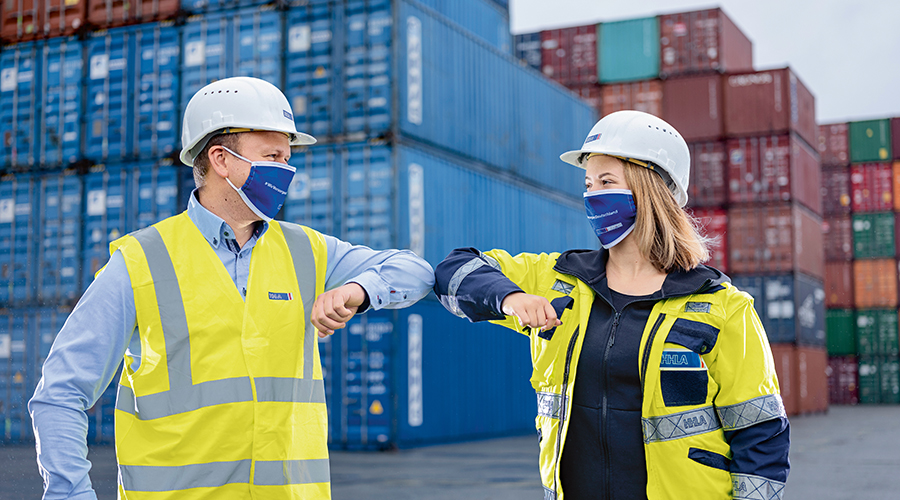
Well informed and protected throughout the pandemic
The health and occupational safety of our employees is of prime importance at HHLA. In 2020, the coronavirus pandemic posed an unprecedented challenge for the company. HHLA mastered it thanks to rapid decision-making, fast action and widely communicated protective measures.
As part of the critical infrastructure, HHLA makes an important contribution towards maintaining supply routes in Germany and Europe. In order to be able to fulfil this task reliably at all times, we had to maintain operations at the HHLA facilities and within the intermodal network while protecting our employees – in addition to observing the restrictions implemented by the authorities in order to stop the spread of coronavirus. Thanks to the quick, decisive action by the Executive Board at the start of the pandemic, and thanks to the discipline of the employees, HHLA was able to uphold its responsibilities to consumers and companies at all times. This was mainly due to Group-wide crisis management, which was able to respond to a wide range of situations. Even when the full extent of the pandemic could not yet be foreseen, a task force was set up, headed by the Chairman of the Executive Board. The task force comprised all Executive Board members, key management staff responsible for operations and both company doctors. The committee analysed the situation every day at first, and later once every week, deciding which measures would have to be implemented in the company. A major area of focus was on providing continual updates for the employees. As such, the task force provided information via the newsletter just after the outbreak, and then informed employees via the existing internal communication channels, such as the intranet and the HHLA Team app. It also answered questions from employees, which they could send to an email address specially set up for the purpose. The company doctors advised each site on how to implement hygiene and social distancing rules effectively. The fear and uncertainty in the workforce was reduced as a result of comprehensive and, above all, regular updates. At the start of the pandemic, for example, there was much uncertainty when processing ships from China, when it was still unclear as to the risks to which HHLA employees were exposed if they came into contact with crew members or containers.
In order to comprehensively protect the health of our employees while maintaining operations, work processes and shift hand-overs were changed and the relevant social distancing and hygiene measures were implemented in all areas of the company. Legal requirements were sometimes put into action before they actually came into force. For example, to stop the spread of the virus, employees who had been in high-risk areas or who knew someone personally who had been infected self-isolated as a precaution – even without official instructions to do so. In order for these protective measures to be accepted and followed, it was important that they were explained and communicated to our employees. It was a big challenge for a company that runs 24/7 with many employees working in blue-collar roles.
The information published by the coronavirus protection task force was therefore not only provided via the intranet, but also via the HHLA Team app, which employees without a desk can also read on their smartphones. Employees working from home were kept up to date via an information channel in Microsoft Teams. This tool was rolled out by HHLA IT within days of the start of the pandemic from 350 to around 2,000 users. In order to ensure that the social distancing and hygiene rules are observed even if the pandemic lasts a long time, highly attention-grabbing formats have been developed. For example, employees were able to send in their own videos and take part in the HHLA summer campaign “The best social distancing – by far”. In their clips, they explained how they were able to maintain social distancing when on holiday or during their leisure time.
Employees at the Hamburg container terminals demonstrated that they are aware of their responsibility in difficult times with a photography campaign. The images were posted under the hashtag #WirVersorgenDeutschland (We Supply Germany).
Working world

A programme of study for shapers of the future
Automation, digitalisation, intercultural complexities and increasingly tough competition require HHLA to come up with new solutions. The company’s aim is to have at its side employees with the right answers to these increasingly complex issues – including in the future, too.
To promote these skills in talented individuals at HHLA, the company worked with Kühne Logistics University (KLU) to develop a part-time English-language Master’s course to be completed while working. The KLU course “Leadership and Supply Chain Management” was tailored to the company-specific, strategic and cultural challenges of the Group and is directed exclusively at HHLA employees in Germany and abroad.
Within 17 months, the participants can complete a Master of Business Administration (MBA) degree while working. During the first 13 months, the intensive self-study phase is supplemented with a four-day block seminar. The course also includes two one-week stints abroad, which had to be postponed in 2020 as a result of the pandemic. At Tongji University in Shanghai, China, participants can study supply chain sustainability, while at Ohio State University in the USA, they can learn about value creation in supply chain management.
In addition to practical topics like digital transformation and sustainable added value, the course primarily deals with strengthening intercultural competence, acquiring a modern view of leadership, designing change processes constructively and supporting the cultural change which has been initiated at HHLA.
The MBA course was launched in April 2020 with twelve students in the first group. Six women and six men from a total of three countries and representing a variety of areas within the holding company took place in the programme. At 50 percent, the high proportion of women in the course reflects our strategic HR policy.
HHLA’s aim is to have employees with the right answers to these increasingly complex issues – including in the future.
Julia Metslov, a Master’s student and the Head of Customer Service at HHLA TK Estonia, is impressed with the course: “I have been in charge of customer service at the Estonian HHLA subsidiary since September 2019. With my participation in the MBA programme and its strong focus on modern management, I want to become an especially good supervisor to my team and improve our work processes.”
The Corporate Master’s course is a major pillar in HHLA’s strategy to promote the knowledge and skills of its employees. In 2020, as part of this strategy, HHLA invested € 5.3 million in employee training in Hamburg alone.”
Social responsibility
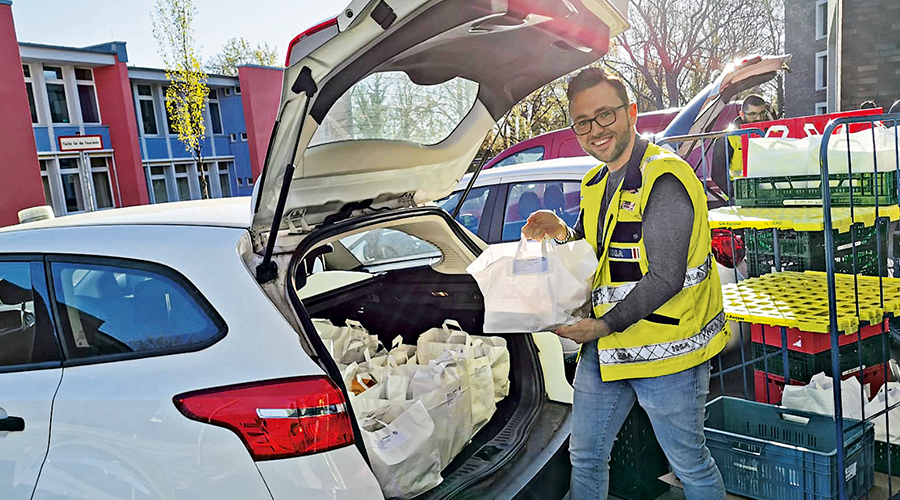
HHLA trainees support Hamburg’s Mittagsrakete school lunch project
HHLA trainees observed unique logistical processes during their voluntary charity project in the spring: they delivered meals to children in need in Hamburg. Due to the closure of nurseries and schools as a result of the coronavirus pandemic, the little ones were not only missing a place to learn and play with their friends, but also often the one hot meal they had every day. As a result, the charity Mittagsrakete has been delivering healthy lunches to children who have been particularly hard hit by this unusual situation.
A total of 2,000 children benefitted from this temporary assistance during the hard lockdown in spring. Delivering the meals to the children at home was an enormous logistical challenge for the charity. As a result, the support from the up-and-coming experts in Port Logistics at HHLA was very welcome.
Thanks to the dedication of the Mittagsrakete charity and the volunteers, an aid programme was quickly put into action until state funding could be released for providing food outside of schools and nurseries. In doing so, the project was of central importance during the interim, with all of the volunteers delivering a total of 42,000 lunches.
“I was happy to help out,” says Daniel Mücke from HHLA. “Because I was raised to help those less fortunate than myself.” He joined forces with Jannis Haase to create the first HHLA team to help the Mittagsrakete charity. The two up-and-coming experts in Port Logistics delivered meals to children in Wandsbek. They delivered food to around 20 families on each route – naturally under strict observance of the social distancing and hygiene requirements. The meals were deposited outside each family’s front door for safety reasons. Even if the trainees had to take a few steps back from the door after ringing the bell, they could feel the gratitude of the families. A total of four HHLA teams supported the project, which was reliant on donations, and delivered the meals during lockdown. During their brief visits, they also perceived the difficult circumstances in which many families live. “It became clear how fortunate we actually are and that we are often preoccupied by first-world problems,” says Daniel Mücke.
Lots of HHLA apprentices signed up voluntarily to help out with the Mittagsrakete project. The Training Manager only assigned volunteers who were completing a practical component of their training in the company and who were not just about to take their final examinations. As a result of the coronavirus measures, apprenticeships had to be almost completely halted at times at HHLA’s facilities. The young trainees received study materials from the vocational college and their HHLA Training Manager to study at home, but many of them still made time for volunteer work. HHLA is delighted with the voluntary support of its trainees because the project unites social commitment with logistics expertise and promotes personal development – all values that HHLA wants to communicate through its apprenticeships.
Business partners
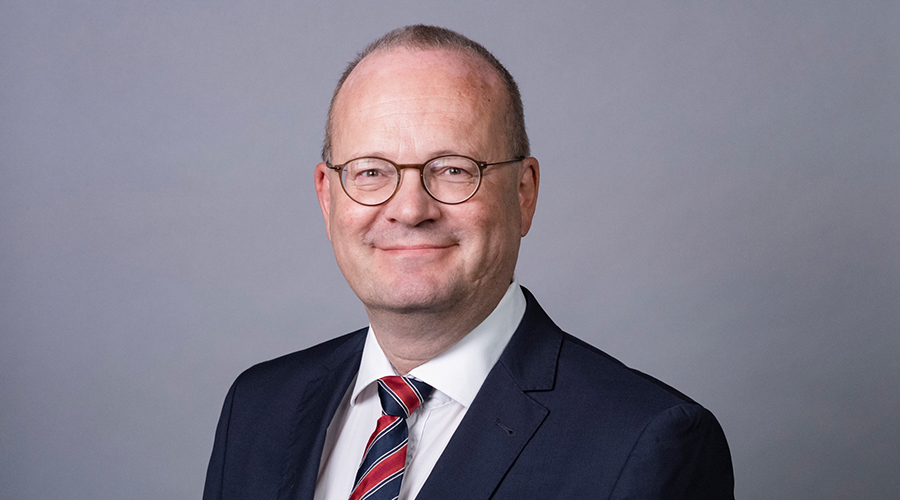
“The significance of inland waterway ships is continuing to grow for HHLA.”
Interview with Thomas Lütje, Director of Sales
Dr. Maurer, as our Compliance Officer, you are responsible for the Group-wide compliance management system of Hamburger Hafen und Logistik AG. Which criteria does HHLA use to decide with whom it works?
That’s right! To date, we have entered into strategic partnerships to promote inland waterway shipping and the use of inland ports with the ports of Braunschweig and Brunsbüttel, including the logistics company Spedition Kruse, which is based there, as well as the shipping company Modal3. In addition, we are now partnered with the ports of Haldensleben and Fallersleben.
The aim is to work together to boost awareness within the forwarding industry of this environmentally friendly, efficient and safe mode of transport. By doing so, we want to do our bit towards moving containers from road transportation over to inland waterway ships, thus reducing the amount of CO2 emissions resulting from transportation.
What significance does the inland port – inland waterway ship – waterways transport system have for HHLA, and what benefits are there for the environment from expanding this system?
This transport system is much more environmentally friendly, even from relatively short distances, because it uses much less energy per container.
Moving container transport over from road to waterways also relieves pressure on already congested roads.The significance of inland waterway ships is continuing to grow for HHLA – not least because we are actively shaping partnerships concerned with expanding the use of inland waterway ships.
How can we tap into the potential for promoting inland waterway shipping via these new partnerships?
We primarily want to raise the profile of inland waterway shipping and to work with our partners to develop new transport concepts for the forwarding industry. In 2021, we want to hold information events – hopefully not just via video conference – in order to increase the perceived appeal of the inland port – inland waterway ship – waterways forwarding system as an attractive alternative.
We want to contribute to moving containers from road transportation over to inland waterway ships and reducing the amount of CO2 emissions resulting from transportation.
In addition to the environmental advantages, what benefits does inland waterway shipping offer the customer?
In 2018 and 2019, there was a significant shortage of truck drivers. The trade press spoke of a systemic shortfall of 60,000 to 70,000 drivers. On the roads, one person can transport two 20-foot containers by heavy goods vehicle. On the waterways, one captain can transport many times this amount by inland waterway ship. The advantages are clear.
The Hamburg Vessel Coordination Center (HVCC), in which HHLA is a majority shareholder, also ensures the seamless handling of the inland waterway ships within the port. The HVCC developed a digital platform especially for inland waterway ships which centrally coordinates ship calls, routes within the port, the assignment of berths and terminal handling.
Is that now having an effect on demand? How has the container volume arriving at or leaving the Port of Hamburg via inland waterway ship changed over the past few years?
Absolutely! Volume has continued to increase over the past few years. Inland waterway ship is the mode of transport recording the biggest gains. As a result of the pandemic, transport volumes in 2020 were not reflective of the previous years. However, we are working on the assumption that demand for inland waterway shipping will continue to increase again after the pandemic.
Is HHLA planning any other strategic partnerships with German inland ports?
Yes, we are. We are currently engaged in discussions with other potential partners.
Added value and innovation
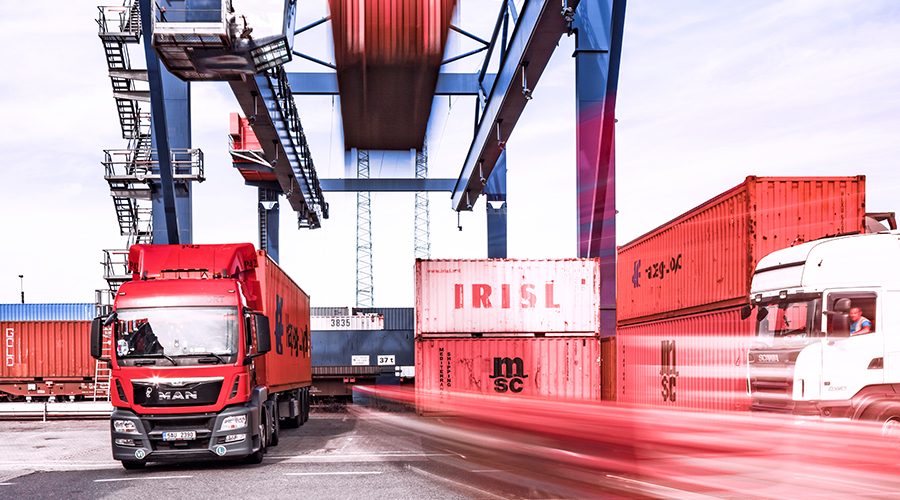
Modility digital booking portal is transferring transportation from road to rail
Find, plan and book free transport capacity for combined transport: It’s easy with the booking and placement portal Modility. Launched by Hamburger Hafen und Logistik AG (HHLA), the corporate spin-off Modility, which is being realised in cooperation with twelve development partners from the transportation and logistics industry, will be entering its pilot phase in early 2021.
Its aim is to create a digital hub for combined transport that will help to shape the transport flows of the future and promote the adoption of climate-friendly combined transport. Easy access to intermodal transportation aims to help transfer more traffic from road to rail and to strengthen combined transport as an environmentally friendly transportation system.
Modility has managed to represent the complexity of combined transport in a supplier-neutral portal with clear functions. Logistics companies can find out about available combined transport links and capacities and then plan and book them directly. With easy access to transport alternatives, they have the option of responding flexibly to variations in cargo volume and enquiries at short notice. The booking process is completed via an intuitive user interface, based on tried-and-tested booking websites from the area of B2C. Climate-friendly combined transport is thus made accessible to companies with no experience in combined transport.
The digital booking portal Modility is a solution developed based on a niche in the market. The development partners involved represent a cross-section of those involved in combined transport, which means that the various needs and challenges of the market are taken into account, right from the start. The booking of combined transport was tested via the portal by development partners and pilot clients prior to market launch. With the resulting findings, Modility is fine-tuned in line with requirements and the range of functions is being continually expanded.
HHLA sees additional potential in moving more transport from road to rail and, through its commitment, is helping to reduce the amount of CO2 emissions resulting from transportation.
HHLA sees cooperation with strong partners as the fundamental key to achieving climate-relevant change within the industry and, through Modility, shows that business model development and climate protection can go hand in hand.